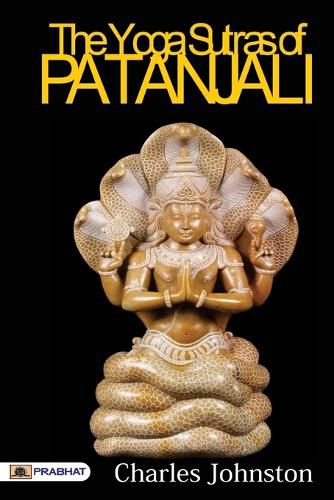Readings Newsletter
Become a Readings Member to make your shopping experience even easier.
Sign in or sign up for free!
You’re not far away from qualifying for FREE standard shipping within Australia
You’ve qualified for FREE standard shipping within Australia
The cart is loading…






This title is printed to order. This book may have been self-published. If so, we cannot guarantee the quality of the content. In the main most books will have gone through the editing process however some may not. We therefore suggest that you be aware of this before ordering this book. If in doubt check either the author or publisher’s details as we are unable to accept any returns unless they are faulty. Please contact us if you have any questions.
The metaphysics of Patanjali is built on the same dualist foundation as the Samkhya school. The universe is conceptualized as two realities in Samkhya-Yoga schools: Puru?a (consciousness) and Prakriti (mind, cognition, emotions, and matter). It considers consciousness and matter, self/soul and body as two different realities. Jiva (a living being) is considered as a state in which puru?a is bonded to Prakriti in some form, in various permutations and combinations of various elements, senses, feelings, activity, and mind. During the state of imbalance or ignorance, one of more constituents overwhelms the others, creating a form of bondage. The end of this bondage is called Kaivalya, liberation, or moksha by both Yoga and Samkhya schools. The ethical theory of Yoga school is based on Yamas and Niyama, as well as elements of the Gu?a theory of Samkhya.
Patanjali adopts the theory of Gu?a from Samkhya. Gu?as theory states that three Gunas (innate tendency, attributes) are present in different proportions in all beings, and these three are sattva guna (goodness, constructive, harmonious), rajas guna (passion, active, confused), and tamas guna (darkness, destructive, chaotic). These three are present in every being but in different proportions, and the fundamental nature and psychological dispositions of beings are a consequence of the relative proportion of these three Gunas. When sattva guna predominates an individual, the qualities of lucidity, wisdom, constructiveness, harmony, and peacefulness manifest themselves; when rajas are predominant, attachment, craving, passion-driven activity, and restlessness manifest; and when tamas predominates in an individual, ignorance, delusion, destructive behavior, lethargy, and suffering manifests. The gu?as theory underpins the philosophy of mind in the Yoga school of Hinduism.
$9.00 standard shipping within Australia
FREE standard shipping within Australia for orders over $100.00
Express & International shipping calculated at checkout
This title is printed to order. This book may have been self-published. If so, we cannot guarantee the quality of the content. In the main most books will have gone through the editing process however some may not. We therefore suggest that you be aware of this before ordering this book. If in doubt check either the author or publisher’s details as we are unable to accept any returns unless they are faulty. Please contact us if you have any questions.
The metaphysics of Patanjali is built on the same dualist foundation as the Samkhya school. The universe is conceptualized as two realities in Samkhya-Yoga schools: Puru?a (consciousness) and Prakriti (mind, cognition, emotions, and matter). It considers consciousness and matter, self/soul and body as two different realities. Jiva (a living being) is considered as a state in which puru?a is bonded to Prakriti in some form, in various permutations and combinations of various elements, senses, feelings, activity, and mind. During the state of imbalance or ignorance, one of more constituents overwhelms the others, creating a form of bondage. The end of this bondage is called Kaivalya, liberation, or moksha by both Yoga and Samkhya schools. The ethical theory of Yoga school is based on Yamas and Niyama, as well as elements of the Gu?a theory of Samkhya.
Patanjali adopts the theory of Gu?a from Samkhya. Gu?as theory states that three Gunas (innate tendency, attributes) are present in different proportions in all beings, and these three are sattva guna (goodness, constructive, harmonious), rajas guna (passion, active, confused), and tamas guna (darkness, destructive, chaotic). These three are present in every being but in different proportions, and the fundamental nature and psychological dispositions of beings are a consequence of the relative proportion of these three Gunas. When sattva guna predominates an individual, the qualities of lucidity, wisdom, constructiveness, harmony, and peacefulness manifest themselves; when rajas are predominant, attachment, craving, passion-driven activity, and restlessness manifest; and when tamas predominates in an individual, ignorance, delusion, destructive behavior, lethargy, and suffering manifests. The gu?as theory underpins the philosophy of mind in the Yoga school of Hinduism.